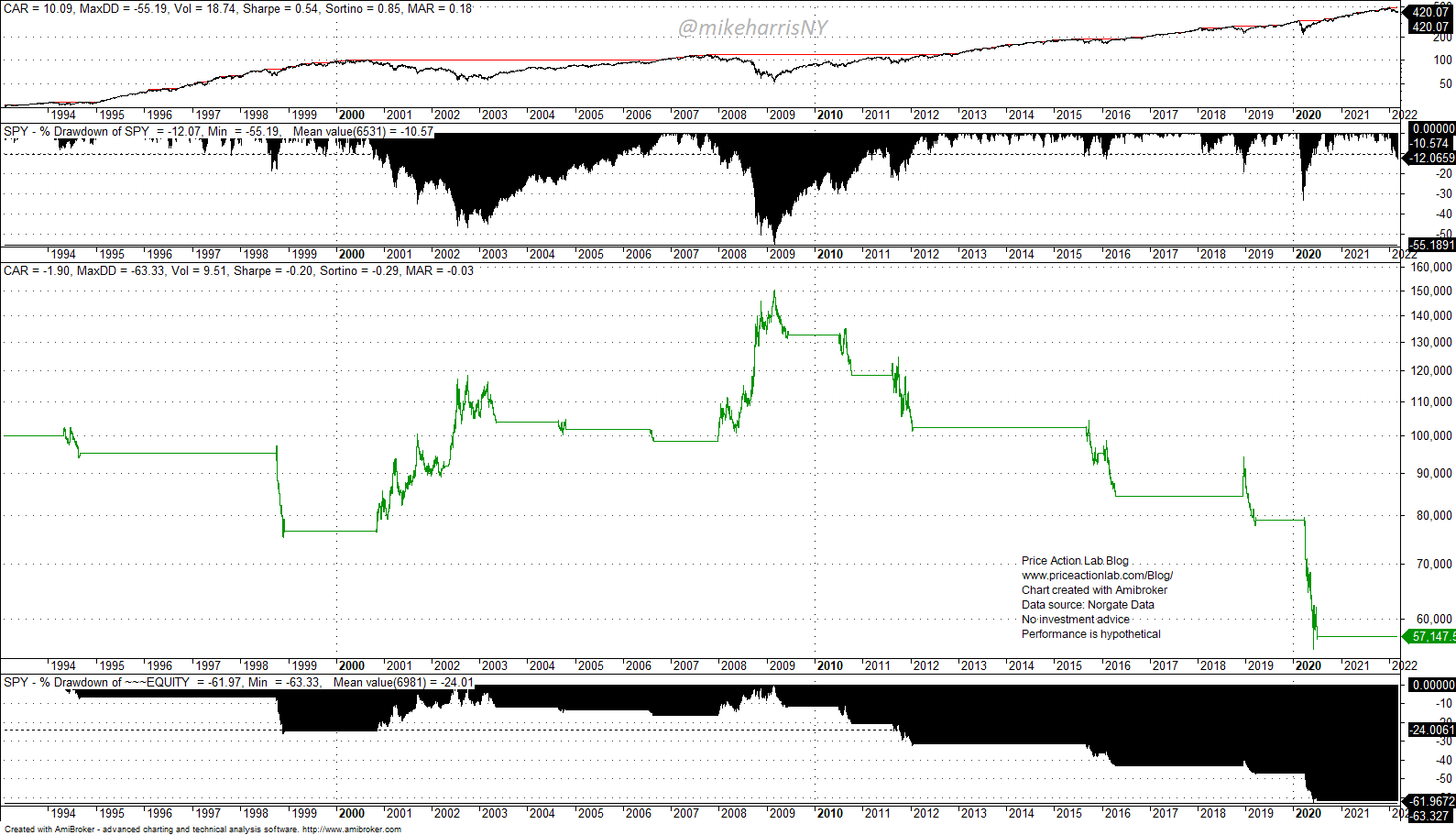A “death cross” signal in S&P 500 was formed on Monday, March 14, 2022. In the last 12 years this indicator pattern has consistently generated large losses for short trades. Has the time come for its resurrection?
Edit 03/31/2022: Since this article was published, the “death cross” short signal has lost 6.6% after four consecutive up days with gain larger than 1%, which has happened only five times since 1942. See the chart at the end of the article.
The “death cross” occurs when the 50-day moving average crosses below the 200-day moving average. As the backtest with SPY ETF daily data shows, it has worked on a few occasions in the past but after 2010 it has generated but losses.
Below is a list of “death cross” short trades since SPY ETF inception. The exits occurs when a “golden cross” is formed, or the 50-day moving average crosses above the 200-day moving average.
There have been 13 short trades with only 23.08% win rate. After 2010, all six trades were losers with -57% combined loss.
Is the “death cross” going to break the losing streak after 2010?
Statistically speaking, all losing streaks are broken at some point in time. It may not be this time and after two or several more losers. However, due to a combination of adverse developments in the markets with rising inflation, geopolitical tensions and war, this could be the time the “death cross” is “resurrected”.
On the other hand, these old technical analysis signals, have been persistently attacked by algos and professional traders in the past, triggering violent squeezes of short technical traders.
In case the only problem was inflation, I would give high odds to a squeeze. The high uncertainty due to the war probably turns this into a coin toss.
Edit 03/31/2022: Below is the chart with the “death cross” signal.
Premium Content 10% off for blog readers and Twitter followers with coupon NOW10
Disclaimer: The premium articles are provided for informational purposes only and do not constitute investment advice or actionable content. We do not warrant the accuracy, completeness, fitness, or timeliness for any particular purposes of the premium articles. Under no circumstances should the premium articles be treated as financial advice. The author of this website is not a registered financial adviser. The past performance of any trading system or methodology is not necessarily indicative of future results. . Read the full disclaimer here.
If you found this article interesting, you may follow this blog via RSS or Email, or in Twitter.









